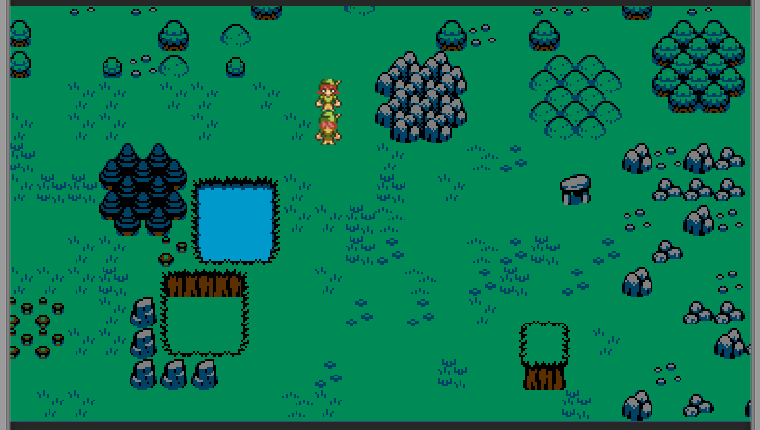Last week’s achievements
* Got functional collision detection!!!
Current focus
Touching up various features.
Weekly goals
* Integrate animations with ORK
* Make the camera follow the player
* Experiment with EarthBound-style HP drain
* Experiment with one-turn-delay priority attacks
* Make functional ally-summoning enemies
* Design layouts for Seaside Slime Cove, Den of Kobolds and the Unicorn, Spring Lake Valley
* Write bestiary flavor text for remaining enemies
Comments
I’m pretty sure I won’t accomplish all of those goals in one week, but that’s everything I have at my top priority level. (Lower things on the totem pole include figuring out how to make cutscenes, figuring out how to make branching dialogue, figuring out how to make enemies visible in dungeons and on the overworld, and finding a pixel artist (best saved until after holiday craziness is over).) Functional collision detection was a major breakthrough, as the past several updates testify, and I’m glad to be done with it. :D
In other news, it’s that time of year for a Pokémon release, which normally means I disappear into the ether for 1500 hours. Thankfully for my productivity, though, Hoenn is only my sixth favorite region and after 1500 hours of X/Y I only care about five or so Pokémon that I didn’t already have. =P
Which reminds me (and the above concludes the progress segment of today’s update):
On my Musings blog I’ll write mini-reviews of every game I’ve played this year, but here’s the short of it: this has been a very good year for me in gaming, but also a good year for reminding me why I’m crazy enough to make an RPG in the first place.
Let me first say this: I’m not doing it for money. =P I spend so little that if I partnered up with someone and bought a second house for all cash, I could collect rent for the rest of time and do nothing. And no doubt you’ve heard people say that’s their dream. “If I had [X] money then I’d never work again.”
But that’s not me. I’m making Dreamblazers partly because I can’t not and partly because nobody’s making the kinds of RPGs I want to play. Or in the case of 2014, even when they make something genius like Bravely Default and Pokémon, something else goes very wrong in the process.
Often when an indie game developer says nobody’s making games suited to them, I start running for the hills because they’re talking about a zany high concept game or random genre bending “just because we can” or something along those lines—things satirized by The Optimistic Indie.
“They said my game is imaginative, personal and meaningful, but unpolished. Well yeah. I’m trying to educate an audience, not attract one.” –April 25, 2014
“Making a roguelike where you are a fashion designer riding a motorcycle. It’s called voguebike. Seriously, where do I get my inspiration?!” – June 22, 2013
“Writing a game about a young woman’s decision to leave her husband for a soldier whose child is robbed of his talent. It’s a platformer.” –October 8, 2012
“I hope that one day I will make the ‘Citizen Kane‘ of games: Greyscale, old-fashioned, not really interactive, you collect lots of coins.” – April 14, 2012
Not what I’m talking about, though! There’s no grand overarching game element that I feel is missing from the industry. Not one. However, there are also no games that I feel do everything I want simultaneously. I’m talking about normal encounters with enemies who are threats but not insta-kills, a hybrid of open-world exploration and linear progression, an equipment system with real decision-making instead of rote upgrade, super frequent boss battles of multiple-weak-enemy and single-strong-enemy and one-one-one-duel variants, no consumable items, highly useful status effects, and other gameplay elements brought together in one place.
And now I can get back to tinkering with that instead of handling “basic” 2D movement, so that’s pretty exciting! :D

